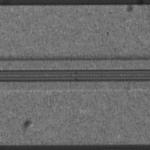Intra- and Inter-Chip Interconnects for High-Performance Computers
Passive Devices and Interconnect Technologies
Passive devices play an equally important role as active devices in RF, microwave and high-speed digital circuits. Integrated passive devices are taking an increasingly large portion of chip area. There have been strong interests in using silicon technologies for microwave and even millimeter-wave passive devices, considering the cost advantage and system-on-a-chip capability compared to compound semiconductor technologies. The latter becomes more feasible as recent progress in silicon technologies has pushed transistor speed closer to GaAs or InP devices. For example, f_T of NMOS transistors reaches 150 GHz at 90-nm technology node and beyond 200 GHz at 65-nm according to ITRS roadmap. However, wide adoption of silicon technologies in microwave passive devices at frequencies beyond 10 GHz has been largely hindered by the lossy substrate, which results in large parasitic capacitance and high loss in on-chip passive devices. This is particularly troublesome in digital CMOS technologies, in which a low-resistivity substrate (~0.01 ohm-cm) with a thin epitaxial layer is usually used to avoid latch-up and improve yield. Using bulk silicon substrate (~10 ohm-cm) alleviates the problem and is widely used for applications under 10 GHz. Further increasing the substrate resistivity poses problems in yield and cost. On the other hand, the progress in silicon technologies also leads to increasing number of interconnect metal layers, and thicker top metals. This opens up opportunities to reduce the loss in on-chip passive devices and interconnect through innovative electromagnetic design.

10-40GHz 7dB CMOS Directional Coupler
Application: millimeter-wave systems, instrumentation
Innovation: broad-side coupled CPW on silicon
Technology: 0.18um standard digital CMOS
Bandwidth: 10-40 GHz
Coupling: 7-10 dB
Directivity: > 10 dB
